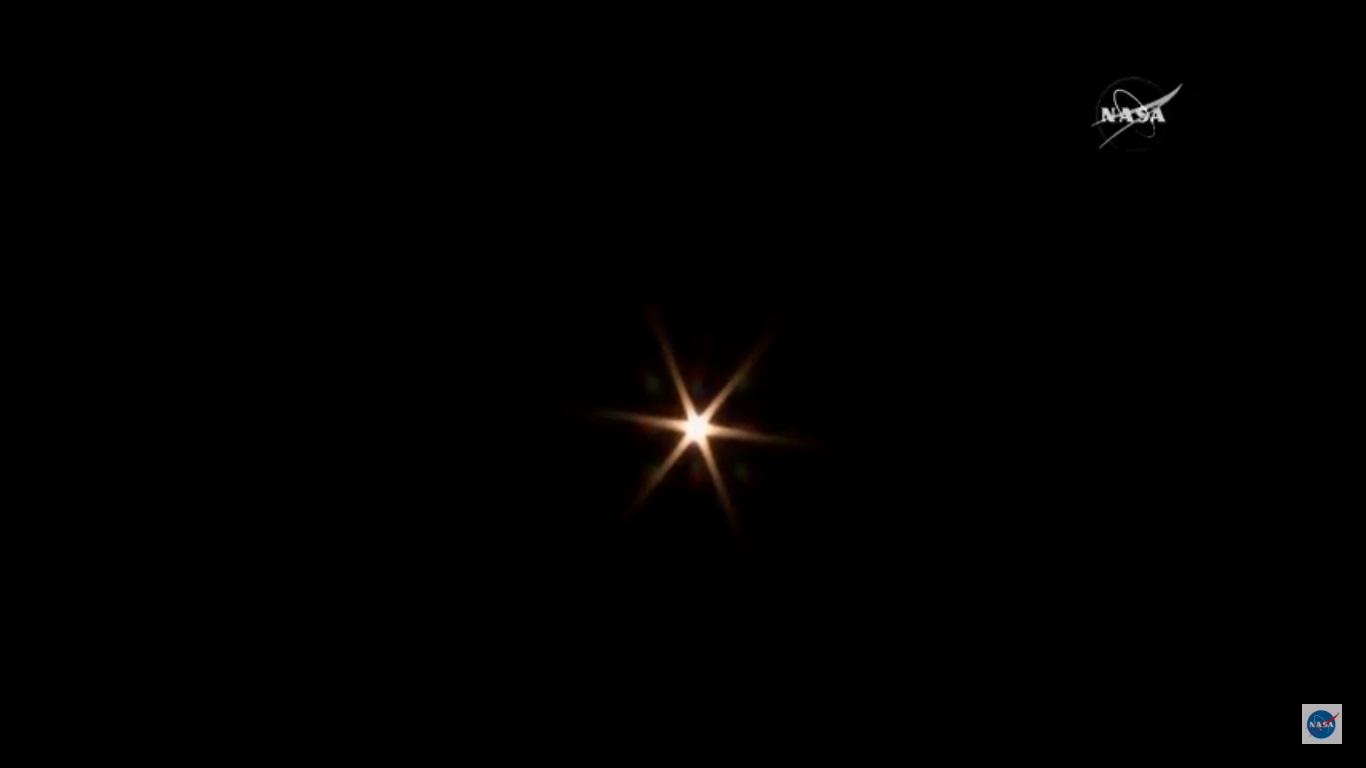Antares Rocket Launches NASA Cargo to Space Station in Dazzling Predawn Liftoff
WALLOPS ISLAND, Va. — An Orbital ATK Antares rocket pierced the clouds in the predawn sky over Virginia this morning (May 21) with a dazzling predawn launch to deliver more than 3 tons of vital supplies to the International Space Station.
The Antares rocket launched an uncrewed Cygnus cargo ship at 4:44 a.m. EDT (0844 GMT) from Pad-0A of NASA's Wallops Flight Facility here, and successfully reached orbit 9 minutes later. The Cygnus, also built by Orbital ATK, is expected to arrive at the space station on Thursday (May 24).
"Earth's newest spacecraft launched this morning in a column of fire and roar," Kirk Shireman, NASA's space station program manager, told reporters after the successful liftoff. "Just an outstanding, outstanding launch." [See photos of the Cygnus vehicle's launch into space]
Because of its predawn timing, Monday's launch was expected to be visible to potentially millions of spectators along the U.S. East Coast. The launch was originally scheduled to lift off on Sunday, with more than 2,000 people expected at NASA's Wallops Flight Facility Visitor Center alone, NASA officials said. NASA and Orbital ATK delayed to Monday due to bad weather and the need for extra rocket checks.
On Monday morning (a school day) that number dropped to about 700 viewers at the Visitor Center, with more expected to watch from sites around the area, Wallops spokesperson Keith Kohler told Space.com. One of those spectators was NASA's new administrator, Jim Bridenstine, who attended the launch in person, according to NASA.
Orbital ATK's Cygnus is packed with 7,385 lbs. (3,350 kilograms) of experiments, clothing, food and other supplies for the six Expedition 55 crewmembers currently living aboard the International Space Station.
That gear includes the Cold Atom Laboratory, an experiment built by scientists to create the coldest spot in the universe using lasers, as well as a closed-loop plant growth experiment, a sextant for navigation studies, and a series of cubesats that will be deployed in orbit from both the station and the Cygnus itself once it departs the orbiting laboratory.
Breaking space news, the latest updates on rocket launches, skywatching events and more!
"What's also important is it will bring home almost 3 tons of cargo back from the space station," Shireman said yesterday.
The Cygnus spacecraft is a disposable vehicle designed to intentionally burn up in Earth's atmosphere at the end of its mission. Before leaving the space station, it will be filled with tons of trash and other unneeded items for disposal, according to its mission profile. Orbital ATK named this Cygnus the S.S. J.R. Thompson in honor of J.R. Thompson, a former NASA director and Orbital ATK executive who died last November.
"In fond memory of [the Cygnus spacecraft's namesake, aerospace executive] Mr. J.R. Thompson, we wish Cygnus a a smooth trip on the rest of their journey to the International Space Station," a spokesperson from Mission Control said after annoucing that the spacecraft had reached orbit.
Monday's launch marked the ninth cargo delivery mission for NASA by the Dulles, Virginia-based Orbital ATK under a $2.9 billion contract for 11 such missions in all. It was the seventh Orbital ATK cargo mission to use the company's Orbital ATK's Antares rocket. The other two missions launched on Atlas V rockets built by the United Launch Alliance, a partnership of Boeing and Lockheed Martin.
Orbital ATK is one of two companies currently ferrying cargo to the International Space Station for NASA. The other is SpaceX, which is expected to fly 20 delivery flights for NASA as part of a contract valued at just over $3 billion. SpaceX has flown 14 of those missions so far using its Falcon 9 rockets and Dragon spacecraft.
NASA has also picked Orbital ATK, SpaceX and another company —Sierra Nevada Corp. — for a new round of cargo delivery contracts under its Commercial Resupply Services 2 program. Sierra Nevada will use its uncrewed Dream Chaser space planes and Atlas V rockets to make its deliveries.
Editor's note: Visit Space.com Thursday for complete docking coverage of the Cygnus OA-9 mission. This story, originally posted at 4:58 a.m. EDT, was updated at 7:46 a.m. EDT to include comments from NASA's post-launch press conference. It was also updated to include final crowd estimates at NASA's Wallops Flight Facility Visitor Center.
Email Tariq Malik at tmalik@space.com or follow him @tariqjmalik. Follow us @Spacedotcom, Facebook and Google+. Original article on Space.com.

Tariq is the award-winning Editor-in-Chief of Space.com and joined the team in 2001. He covers human spaceflight, as well as skywatching and entertainment. He became Space.com's Editor-in-Chief in 2019. Before joining Space.com, Tariq was a staff reporter for The Los Angeles Times covering education and city beats in La Habra, Fullerton and Huntington Beach. He's a recipient of the 2022 Harry Kolcum Award for excellence in space reporting and the 2025 Space Pioneer Award from the National Space Society. He is an Eagle Scout and Space Camp alum with journalism degrees from the USC and NYU. You can find Tariq at Space.com and as the co-host to the This Week In Space podcast on the TWiT network. To see his latest project, you can follow Tariq on Twitter @tariqjmalik.


